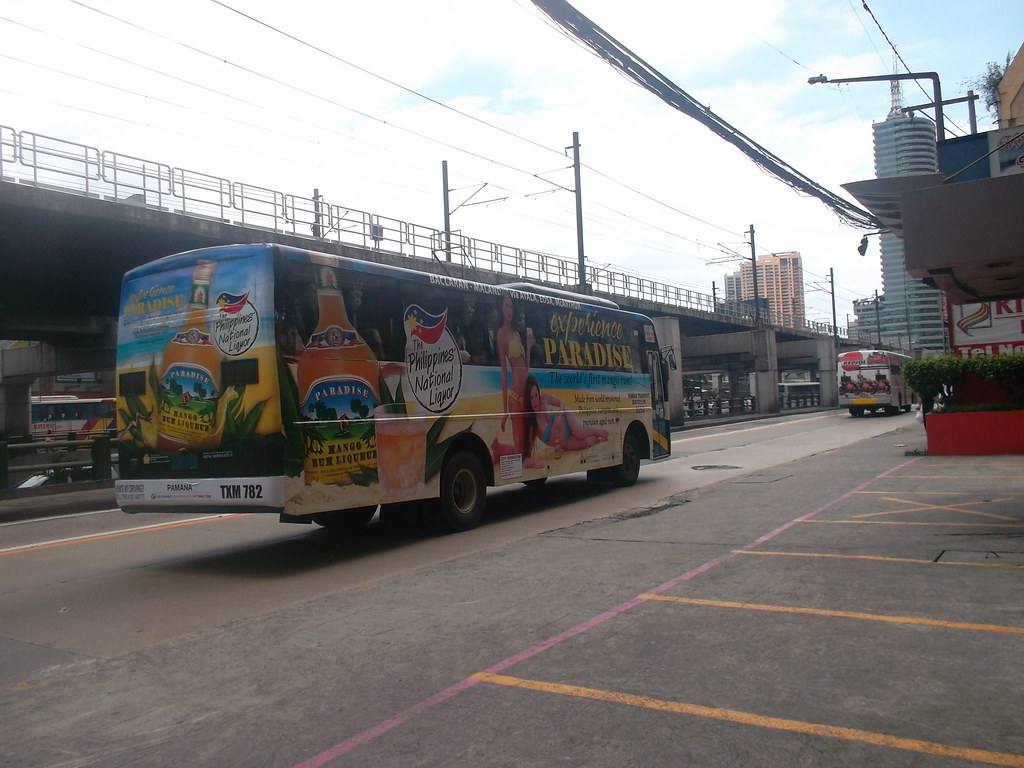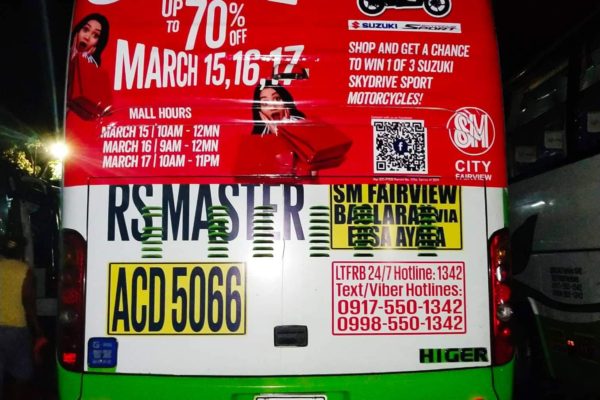Recognizing the Role of Transportation Marketing in Enhancing Brand Name Exposure and Customer Engagement
Transportation advertising has actually arised as an essential element in the advertising landscape, supplying unique opportunities for brands to boost their visibility and involve customers successfully. With the capability to get to a varied and restricted audience during their day-to-day commutes, these marketing methods are not just concerning presence; they have to do with creating meaningful links with potential customers. As we check out the complex benefits and innovative approaches within transit advertising, it comes to be crucial to take into consideration just how these aspects collectively influence consumer assumption and behavior, questioning about their long-term influence on brand name commitment.
Definition of Transportation Advertising
Transit advertising describes the technique of advertising items, solutions, or brands through promotions positioned in and around public transport systems. This type of marketing includes a range of positionings, including posters on trains and buses, digital screens at transit stations, and covers on the outside of automobiles. It aims to reach a varied audience, taking advantage of on the high foot traffic connected with public transportation.
Transit advertising is strategically placed to capture the attention of commuters, who commonly spend substantial time traveling or waiting. By incorporating promotions into the daily regimens of individuals, brand names can create an enduring perception and foster brand acknowledgment. The medium is specifically effective in city environments, where mass transit is a key mode of travel.
Additionally, transportation marketing can facilitate local targeting, enabling organizations to reach details demographics based on transportation courses and station areas. As metropolitan populations grow and using public transport rises, this marketing approach has gained importance as a vital element of incorporated marketing methods. The vibrant nature of transit advertising and marketing, combined with its capability to involve customers in a captive environment, highlights its importance in modern advertising practices.
Benefits of Transit Marketing
The performance of transportation advertising depends on its capability to supply a multitude of benefits to brands looking for to boost visibility and engagement. One of the main advantages is the considerable reach it supplies; transit advertisements can successfully target varied demographics throughout city areas, reaching both pedestrians and commuters alike. This broad exposure considerably improves brand name understanding.
An additional advantage is the high regularity of impressions. As transportation lorries follow established routes and quit at numerous areas, they produce recurring direct exposure that strengthens brand messages. This frequency cultivates familiarity, which is critical in customer decision-making.
Transit marketing is likewise cost-effective compared to various other media systems. Provided its expansive reach and potential for high impacts, brand names typically experience a reduced cost per thousand impressions (CPM), optimizing their marketing budget plan.
Moreover, transportation ads can create a sense of area connection. By aligning with neighborhood transit systems, brands can reverberate with local target markets and promote a feeling of regional pride. This local technique improves brand commitment and interaction, making transit advertising an engaging option for businesses aiming to solidify their presence out there.

Effective Methods for Transit Campaigns
To take full advantage of the impact of transportation campaigns, brand names ought to leverage strategic planning and implementation tailored to their target market. First, determining the group qualities of the audience utilizing public transportation is critical. This permits brands to produce personalized messaging that reverberates with potential clients.
Following, selecting the ideal transportation mediums is necessary. Whether utilizing bus covers, metro posters, or digital displays, each medium has unique advantages that can improve presence. For example, dynamic visuals on bus covers can stand out, while digital ads can be upgraded frequently to show prompt promotions.
Moreover, integrating a cohesive branding strategy across transportation systems ensures uniformity and strengthens the brand's identification. Utilizing eye-catching layouts and memorable taglines will certainly reinforce brand recall among commuters.
By utilizing these techniques, brands can efficiently harness the capacity of transit advertising, fostering better understanding and connection with their target audience. Ultimately, a well-executed transit project can drive considerable growth in brand presence and customer engagement.

Gauging Effect and Engagement
In evaluating the performance of transit marketing campaign, precise dimension of impact and engagement is important for brand names seeking to enhance their marketing techniques. Metrics such as reach, frequency, and impressions give foundational information to evaluate presence. Analyzing these variables assists determine the amount of prospective customers are subjected to the promotions during their day-to-day commutes.
Engagement can be more evaluated via consumer interactions, such as website web traffic, social media states, and direct actions to calls-to-action included in the ads. Making use of tools like QR codes or one-of-a-kind URLs can assist in tracking of consumer actions directly linked to transportation campaigns. Studies and feedback systems additionally act as valuable techniques to gather qualitative data on customer perceptions and recall of the ad.
Additionally, progressed analytics and acknowledgment designs can associate transit exposure with subsequent buying behavior, providing insights into the roi. By employing a detailed approach that combines quantitative and qualitative procedures, brand names can create a nuanced understanding of their transportation advertising impact. Ultimately, this data-driven technique allows brand names to fine-tune their projects, ensuring they resonate successfully with target market and boost total brand name exposure.
Situation Researches of Successful Projects
Effective transportation advertising and marketing projects act as engaging examples of just how efficient methods can raise brand name exposure and engagement. Transit Advertising Philippines. One noteworthy instance is the "I Love New york city" project, which changed the city's picture and attracted millions of travelers. By utilizing metro advertisements, billboards, and bus wraps, the project produced a strong, natural brand you could try these out identity, resulting in a substantial uptick in tourist and regional company patronage
Another excellent campaign is Coca-Cola's "Share a Coke" campaign, which leveraged transportation marketing to personalize the brand name experience. By featuring preferred names on promotional materials across various transit systems, Coca-Cola cultivated a much deeper psychological connection with customers, encouraging them to share their experiences on social media.
Furthermore, the "Got Milk?" project properly used public transport ads to reach a broad target market, strengthening the message of the importance of milk in a well balanced diet regimen. The campaign saw a quantifiable boost in milk intake in target demographics.
These situation researches show that when implemented thoughtfully, transportation advertising and marketing can substantially enhance brand presence, foster consumer interaction, and drive quantifiable results, demonstrating its important duty in modern advertising and marketing strategies. - Transit Advertising Philippines
Final Thought
In final thought, transit advertising and marketing serves as an essential tool top article for improving brand exposure and promoting consumer engagement. Ultimately, the ability to measure involvement and assess effective instance research studies highlights the effectiveness of transit advertising in driving brand name commitment and consumer interactions.
Transit advertising and marketing has actually emerged as a crucial element in the advertising and marketing landscape, providing unique possibilities for brand names to raise their visibility and involve consumers effectively.Additionally, transportation marketing can help with localized targeting, permitting services to reach specific demographics based on transportation paths and station areas.In examining the effectiveness of transportation marketing projects, accurate site here dimension of effect and interaction is important for brand names seeking to optimize their advertising and marketing techniques.Successful transit advertising projects serve as engaging examples of just how effective approaches can raise brand name exposure and interaction.In conclusion, transportation marketing serves as a crucial tool for boosting brand exposure and fostering customer involvement.
Comments on “Budget-friendly Transit Advertising Philippines for Brand Awareness”